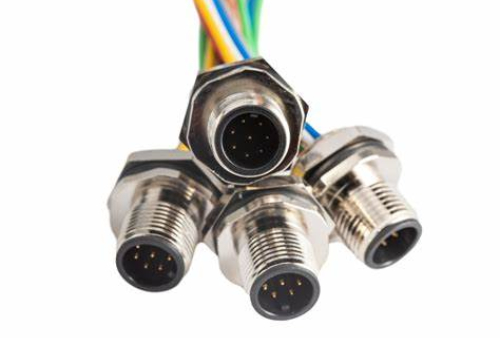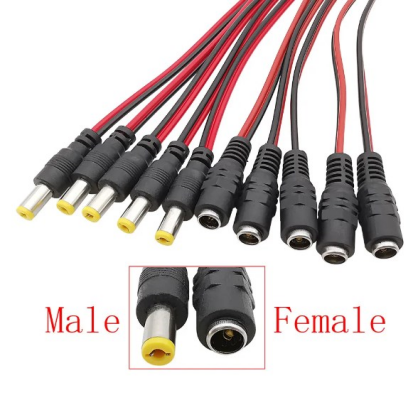OUTLINE:
Untangling the Mystery: What are Pigtail Connectors
 437
437What are pigtail connectors? Imagine them as short, pre-wired extensions with one connector on each end. They typically have a male and a female end, allowing you to easily link up different components or extend reach to existing connections.

The Types Of Pigtail Connectors
Those versatile little electrical chameleons come in a fascinating array of types, each ready to tackle a specific connection challenge. Let's explore the jungle of pigtail possibilities:
By Connector Types:
- Male-to-female: The classic duo, bridging the gap between two different components.
- Male-to-male: Joining two male ends, extending reach like an electrical power bank.
- Female-to-female: Doubling up an existing female connection, perfect for adapters or splitters.
- Multi-connector: Branching out with more than two ends, like a miniature octopus of power!

By Application:
- Power connectors: Bringing the juice where it's needed, with varying amperage ratings.
- Audio/Video connectors: Plugging into the world of sound and vision with RCA, XLR, or TOSLINK options.
- Data connectors: Transferring information with USB, Ethernet, or HDMI pigtails.
- Sensor connectors: Bringing smarts to your projects with pigtails for specific sensor types.
By Wire Gauge:
- Thicker gauges: Handling heavy currents for devices like appliances or motors.
- Thinner gauges: Perfect for delicate tasks like lighting or low-power electronics.
By Material:
- PVC: The most common, offering good insulation and cost-effectiveness.
- Silicone: More flexible and heat-resistant, ideal for harsh environments.
- Teflon: Top-tier heat resistance and chemical resistance, for demanding applications.
How Do Pigtail Connectors Work
To understand how a pigtail connector works, let's imagine it as a tiny translator in the electrical world. It takes one type of language (connector) and converts it into another, allowing two components to communicate, or in this case, share electricity.
Inside The Pigtail:
- Wires: The pigtail contains one or more insulated wires, each carrying electrical current. The thickness (gauge) of these wires depends on the amount of power they need to handle.
- Connectors: Each end of the pigtail has a connector, typically male or female. These connectors fit into specific ports on devices or other wires, establishing the physical connection.
- Insulation: The wires and connectors are covered in protective insulation, preventing electrical shorts and ensuring safety.
The Connection Process:
- You identify the two components or wires you want to connect.
- Choose a pigtail with the right connector types on each end that match the ports on your components.
- Simply plug the pigtail's connectors into the corresponding ports on both components.
- The wires inside the pigtail carry the electrical current from one component to the other, establishing the connection
What Are Pigtail Connectors Used For
These handy helpers come in play in various scenarios, like:
- Lighting Systems: Adding LED strips to cabinets, under counters, or along walls? Pigtails connect them to power sources with ease.
- Audio & Video: Extending speaker wires or linking video game consoles to displays – pigtails handle it!
- Sensors & Security: Connecting security sensors to alarm systems or adding motion detection lights? Pigtails simplify the process.
- General Electronics: From extending power to small appliances to connecting batteries to gadgets, pigtails offer an adaptable solution.
Benefits of using them:
- Convenience: Simple plug-and-play solution – no soldering or complex wiring needed!
- Flexibility: Different lengths and connector types for diverse applications.
- Organization: Tidy connections, reducing cable clutter and complexity.
- Safety: Proper insulation and construction ensure safe and reliable connections.
Additional Perks:
- Organization Aficionado: Tidy connections enhance the aesthetics of your project, giving it a clean and professional look.
- Portable Versatility: Packable and compact, pigtails are perfect for on-the-go repairs or portable setups.
- Budget-Friendly Hero: Compared to complex wiring solutions, pigtails offer an affordable way to achieve your connection goals.
Tips for choosing a pigtail connector
- Choose the right pigtail for your needs – connector type, wire gauge, and length are crucial.
- Prioritize quality – invest in durable pigtails for long-lasting performance.
- Safety first! Follow electrical safety guidelines while working with any connections.
Conclusion
With their versatility and ease of use, pigtail connectors become unsung heroes in the world of electronics. So, the next time you face a wiring challenge, consider these handy little companions – they might just be the bridge you need to connect your creative ideas to reality!

Disclaimer: The views and opinions expressed by individual authors or forum participants on this website do not represent the views and opinions of Chipsmall, nor do they represent Chipsmall's official policy.

share this blog to:

